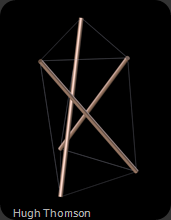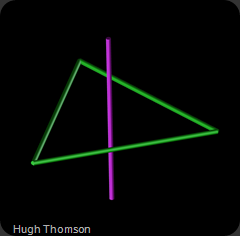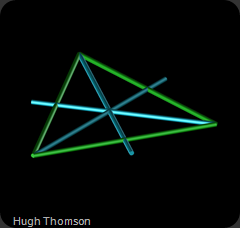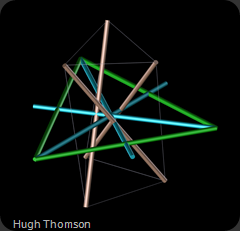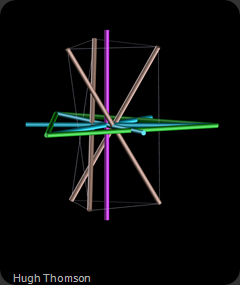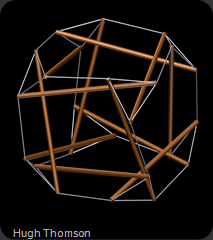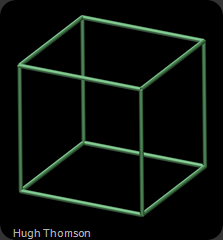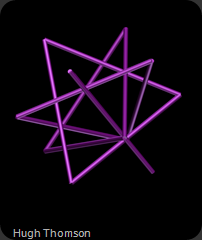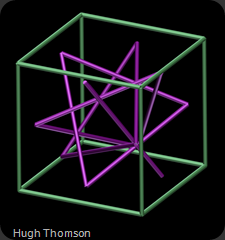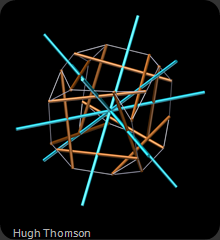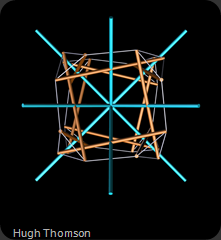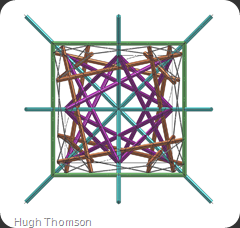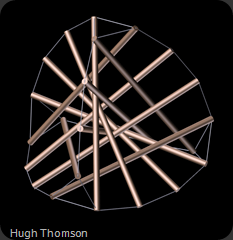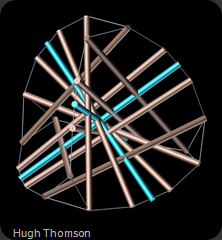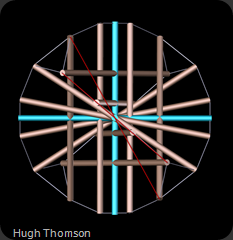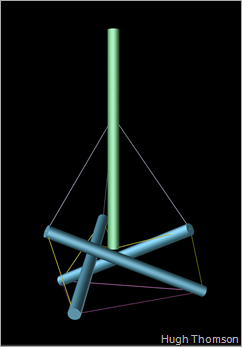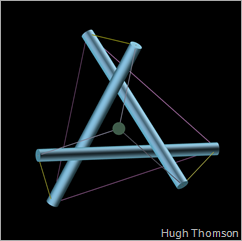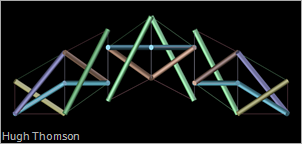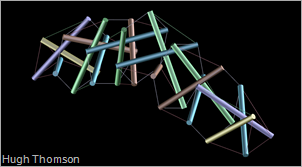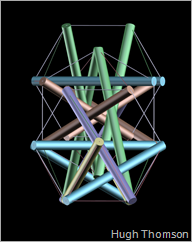Introduction to Tensegrity Symmetry: This post has been updated to reflect changes to my blog and was essentially my first study of geometric symmetry.
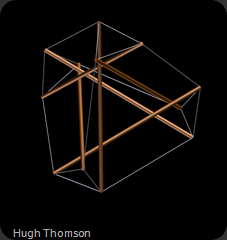 Bob Burkhardt presented the mathematical formulae to develop this tetrahedron and Marcela Pars also covered this on his website.
Bob Burkhardt presented the mathematical formulae to develop this tetrahedron and Marcela Pars also covered this on his website.
It occurred to me that this type of structure must follow some basic rules, so I started looking at proportional geometric relationships for a tetrahedron based on a fixed length of compression strut.
At first my attention was focussed on identifying proportional relationships for the end triangular components for each of the tetrahedron size variants I had already built. I created a circle based on the 3 connection points in each case and then analysed the results. After a great deal of study there was no immediate proportional relationships that could be easily identified.
So I started again this time working from the extremes of tetrahedron displacement. The process is actually quite difficult to explain but I will make an attempt and perhaps follow through later with a more detailed report.
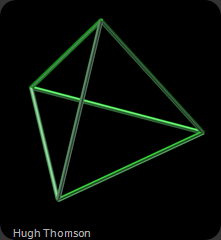
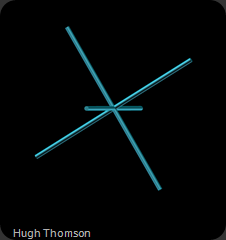
A Tetrahedron in its most basic form is essentially a polyhedron or pyramid shape (above left). The creation of the truncated tetrahedron as we know it is the transition when we morph from the platonic form to a linear form (above right). To better understand this morphing I would refer you to http://complexity.xozzox.de/tensegrity.html, where you can see via the Java applet how the transition works.
The green and blue “struts” are visual reference elements for purposes of clarification and not struts in the sense of being physical components. The blue struts are representative of the linear form which coincidentally also represents an axis had it been projected from the centre of the polyhedron edges to the centroid.
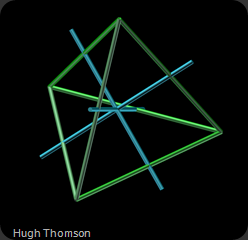
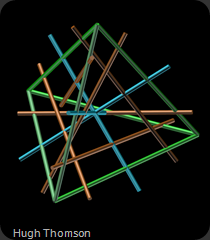
The image above left shows the extreme parameters of the transition from pyramid to linear form. In the image on the right I have introduced a tensegrity tetrahedron to illustrate how the struts splay out creating four triangular truncations. For clarity I have omitted the tendons.
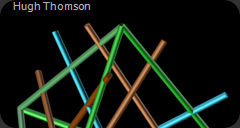
After drawing numerous circles and construction geometries the entire study was becoming very complex and the myriad of lines I had was quite overwhelming, which may explain why I initially missed the most interesting aspect of a tensegrity tetrahedron.
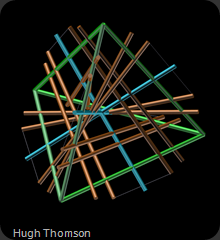
At this stage I had created another tetrahedron with a dimensional variance on the tendons, but still using the same size of strut and placed it into my model..
This is where it started to get interesting as at last a pattern was beginning to emerge!
If you look closely at this image you can see that in each case the brown struts intersect exactly at the midpoint with the blue axis struts (representing the linear extreme parameter).
Essentially the blue struts define an axis of rotational symmetry.
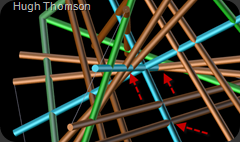
To me my findings are very significant by showing a specific common relationship that ties the struts to a known alignment. I should also note that in each case the brown struts are perpendicular to the blue struts. Please note; it may appear that the same is true for the intersections between the brown struts and the green struts but in fact that is not the case.
So simply by knowing the base geometry and the end linear form geometry we can determine any intermediate location of the struts from the graphical perspective, which ultimately simplifies the modelling; both virtual and physical.
Just to give you some idea of how complex this study got I captured the following image:

Coincidentally this image also helps to show the strut relationships…the centre intersections and also the perpendicular aspects.
I am not sure if it is very clear, but you may be able to make out the circle perimeter line drawn through the end points of the brown and blue struts that I used to graphically check perpendicularity.
Having now studied in detail the geometry of the T-Prism and the Tetrahedron I am sure that other tensegrity structures may also exhibit some form of physical consistency such that the development of same is much easier to construct and ultimately calculate.
Update: Feb 2012. As this was my first study of Tensegrity Symmetry I have left the post as I wrote it at that time. The process of discovery is typical for a study of this nature concluding that the brown compression struts retain a midpoint relationship perpendicular to a projected axis from the polyhedron to the centroid. The transition to a tensegrity structure maintains this relationship as each strut revolves around this axis.
Thus the term axis/rotational symmetry evolved. At this time having now gained a better understanding of the potential underlying planar geometry pertinent to tensegrity structures I was tempted to rewrite this article but sometimes it is important to record how these discoveries came about.
 Tensegrity 3v Pars Tetra RS
Tensegrity 3v Pars Tetra RS Tensegrity Cube RS
Tensegrity Cube RS Tensegrity Tetrahedron RS
Tensegrity Tetrahedron RS Tensegrity T-Prism RS
Tensegrity T-Prism RS Tensegrity Octahedron RS
Tensegrity Octahedron RS